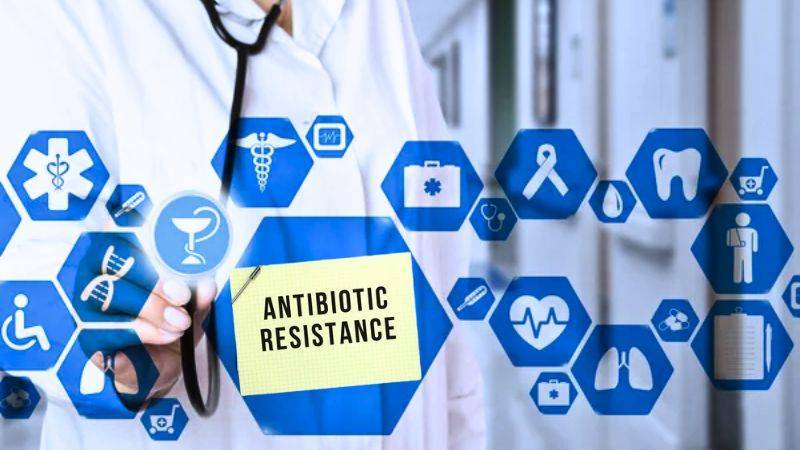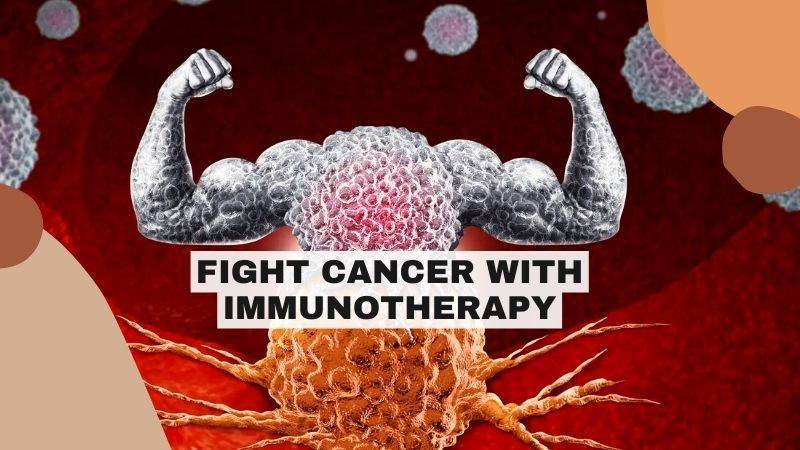Antibiotics are medications used to prevent and treat bacterial infections. However, the effectiveness of antibiotics can be compromised due to antibiotic resistance, which occurs when bacteria adapt in response to these medications.
Antibiotic resistance is a global concern, and surveys and studies are regularly conducted to assess the current status and trends of antibiotic resistance worldwide.
These surveys help researchers and policymakers understand the prevalence of resistant bacteria, identify emerging patterns, and develop strategies to combat resistance.
What is Antibiotic Resistance?
Antibiotic resistance refers to the phenomenon where bacteria undergo genetic changes that render antibiotics ineffective in killing or inhibiting their growth. This results in bacterial infections becoming more challenging to treat.
It’s important to note that antibiotic resistance is a subset of antimicrobial resistance, which can also occur in fungi, parasites, and viruses. However, in the case of antibiotic resistance, it specifically pertains to bacteria.
When bacteria develop antibiotic resistance, it means that fewer antibiotics can effectively combat those particular strains of bacteria. While alternative antibiotics may still be available, it is crucial to have a wide range of treatment options to effectively address the diverse types of bacterial infections.
It’s worth emphasizing that antibiotic resistance occurs within bacteria themselves and not within the human body. Therefore, it is the bacteria that become resistant to antibiotics, reducing the effectiveness of these medications against specific bacterial strains.
Why do Doctors use Antibiotics?
Healthcare providers use antibiotics for various reasons, including:
Treating internal infections: Antibiotics are prescribed to address bacterial infections that occur inside the body, such as urinary tract infections (UTIs) or certain respiratory infections.
Managing severe bacterial infections: In cases of severe bacterial infections, antibiotics are essential to kill or inhibit the growth of bacteria. This includes infections like pneumonia or Methicillin-resistant Staphylococcus aureus (MRSA) that can pose life-threatening risks.
Addressing bloodstream infections: When a bacterial infection enters the bloodstream, a condition called sepsis can occur. Antibiotics are necessary to treat these bloodstream infections and prevent further complications.
Preventive measures: Antibiotics may be used as a preventive measure to reduce the risk of infection after surgical procedures. This helps to minimize the chances of post-operative infections and promote successful recovery.
Doctors carefully consider the appropriate use of antibiotics. They evaluate the specific infection, its severity, and the potential benefits and risks associated with antibiotic treatment.
Proper diagnosis and adherence to treatment guidelines are crucial to ensure effective and responsible use of antibiotics, while also minimizing the development of antibiotic resistance.
What Causes Antibiotic Resistance?
Antibiotic resistance can be caused by several factors, including:
Overuse of antibiotics: Taking antibiotics when they are not necessary or ineffective contributes to the development of antibiotic resistance. For instance, many cases of sore throat (pharyngitis) are caused by viruses, where antibiotics are ineffective. Similarly, bacterial ear infections often improve on their own without antibiotic treatment.
Misuse of antibiotics: Incomplete or incorrect use of antibiotics can also lead to antibiotic resistance. If antibiotics are not taken as prescribed, such as missing doses, stopping treatment prematurely, or using incorrect antibiotics, bacteria have a chance to multiply and mutate. This can result in the emergence of bacteria that are increasingly resistant to the prescribed antibiotic.
Agricultural use: The use of antibiotics in livestock farming, estimated to account for a significant portion of antibiotic use in some countries, can contribute to antibiotic resistance. Bacteria in animals can develop resistance when exposed to antibiotics used for growth promotion or disease prevention. This resistance can be transmitted to humans through direct contact, consumption of contaminated food, or exposure to environmental reservoirs.
Spontaneous resistance: Bacteria can undergo genetic changes or mutations naturally. These changes in their DNA can make them resistant to antibiotics, rendering the medications ineffective in targeting and killing them.
This spontaneous resistance can occur even in the absence of antibiotic exposure.
Transmitted resistance: Drug-resistant bacterial infections can be transmitted from one person to another. When a person contracts a contagious infection caused by antibiotic-resistant bacteria, the infection becomes difficult to treat with antibiotics. The spread of these resistant infections can occur in healthcare settings, communities, or through other means of transmission.
These efforts help to slow down the development and spread of antibiotic resistance and preserve the effectiveness of antibiotics for treating bacterial infections.
Why is Antibiotic Resistance a Problem?
The global scope of antibiotic resistance is reaching alarming levels. We are witnessing the emergence and worldwide dissemination of new resistance mechanisms, posing a severe threat to our ability to effectively treat common infectious diseases.
This escalating problem extends to a growing range of infections, including pneumonia, tuberculosis, blood poisoning, gonorrhea, and foodborne illnesses.
As the effectiveness of antibiotics diminishes, these once treatable infections are becoming increasingly challenging and, in some cases, impossible to cure.
The situation is exacerbated in regions where antibiotics are available for purchase without a prescription, both for human and animal use.
The unrestricted access to antibiotics in such settings worsens the emergence and spread of resistance. Additionally, in countries lacking standardized treatment guidelines, healthcare professionals and veterinarians often overprescribe antibiotics, while the general public tends to misuse them.
If immediate action is not taken, we are on the path towards a post-antibiotic era, where common infections and even minor injuries can once again result in fatalities.
The urgency of the situation demands comprehensive measures to address antibiotic resistance, including the development of new antibiotics, the implementation of effective prescription regulations, responsible antibiotic usage practices, and public awareness campaigns.
Only through concerted efforts can we prevent the dire consequences of a world without effective antibiotics.
Antibiotic Resistance and ‘Superbugs’
The excessive utilization of antibiotics in recent times has resulted in their decreasing effectiveness and the emergence of “superbugs.”
These superbugs refer to strains of bacteria that have developed resistance to numerous types of antibiotics, including well-known examples such as
- MRSA (methicillin-resistant Staphylococcus aureus),
- Clostridium difficile (C. diff), and
- The bacteria responsible for multi-drug-resistant tuberculosis.
Infections caused by these superbugs can be severe and pose significant challenges for treatment. They are increasingly becoming a leading cause of disability and death worldwide.
The most concerning aspect is the potential emergence of entirely new strains of bacteria that are resistant to all existing antibiotics. This scenario presents a grave concern as it leaves us without effective treatment options for such infections.
It is crucial to address this issue urgently by implementing strategies to promote responsible antibiotic use, developing new antibiotics, enhancing infection prevention and control measures, and fostering global collaboration to combat antibiotic resistance.
These efforts are necessary to prevent the further proliferation of superbugs and to safeguard our ability to treat bacterial infections effectively.
Antibiotics are no Longer Routinely used to Treat Infections
The routine use of antibiotics to treat infections has decreased due to several reasons:
Ineffective against viral infections: Many infections, such as those caused by viruses, do not respond to antibiotics. Antibiotics specifically target bacteria, and therefore, they are not effective against viral illnesses like the common cold or flu.
Limited impact on healing: Antibiotics may not necessarily speed up the healing process for certain infections. In some cases, the body’s immune system can effectively fight off the infection without the need for antibiotics. Moreover, using antibiotics when not necessary can lead to unnecessary side effects.
Development of antibiotic resistance: The overuse and misuse of antibiotics contribute to the development of antibiotic resistance. When antibiotics are frequently used for trivial conditions, bacteria have more opportunities to develop resistance. This can result in antibiotics becoming less effective or completely ineffective for treating more serious infections.
In response to these concerns, both the National Health Service (NHS) in the UK and health organizations worldwide are actively working to reduce the unnecessary use of antibiotics. They focus on promoting responsible antibiotic prescribing practices, particularly for non-serious health issues.
For instance, antibiotics are no longer routinely prescribed for conditions such as:
Chest infections: Mild to moderate chest infections, including some cases of bronchitis, are often caused by viruses and do not typically require antibiotics.
Ear infections in children: Many ear infections in children are caused by viruses and can resolve on their own without antibiotics. Only certain severe or persistent cases may require antibiotic treatment.
Sore throats: Most sore throats, including those caused by common cold viruses or streptococcal bacteria (strep throat), do not routinely require antibiotics. In cases where strep throat is suspected, a throat swab may be conducted to confirm the presence of bacteria before initiating antibiotic treatment.
These measures aim to preserve the effectiveness of antibiotics for more severe infections while minimizing the risks associated with their unnecessary use.
Prevention and Control
Prevention and control are crucial in combating the spread of antibiotic resistance. Action can be taken at various levels of society to mitigate its impact.
Here are steps that can be taken:
Individuals:
- Use antibiotics only when prescribed by a certified health professional.
- Refrain from demanding antibiotics if advised against by healthcare workers.
- Adhere to healthcare professionals’ instructions when using antibiotics.
- Avoid sharing or using leftover antibiotics.
- Prevent infections through regular handwashing, practicing safe food preparation, avoiding close contact with sick individuals, practicing safer sex, and staying up to date with vaccinations.
- Choose foods produced without the use of antibiotics for growth promotion or disease prevention in healthy animals, following the WHO’s Five Keys to Safer Food.
Policy makers:
- Establish robust national action plans to address antibiotic resistance.
- Enhance surveillance of antibiotic-resistant infections.
- Strengthen policies, programs, and implementation of infection prevention and control measures.
- Regulate and promote appropriate use and disposal of quality medicines.
- Provide information on the impact of antibiotic resistance.
Health professionals:
- Prevent infections by maintaining cleanliness in hands, instruments, and environments.
- Prescribe and dispense antibiotics only when necessary, based on current guidelines.
- Report cases of antibiotic-resistant infections to surveillance teams.
- Educate patients on the correct use of antibiotics, the dangers of misuse, and the importance of infection prevention measures.
Healthcare industry:
- Invest in research and development of new antibiotics, vaccines, diagnostics, and other tools.
Agriculture sector:
- Administer antibiotics to animals under veterinary supervision only.
- Avoid using antibiotics for growth promotion or disease prevention in healthy animals.
- Vaccinate animals to reduce the need for antibiotics and explore alternatives when available.
- Promote and implement good practices throughout the production and processing of animal and plant-based foods.
- Enhance biosecurity on farms, improve hygiene, and prioritize animal welfare to prevent infections.
By implementing these measures, we can collectively address antibiotic resistance, preserve the effectiveness of existing antibiotics, and work towards developing new solutions to combat this global challenge.
Recent Development and Impact
As per WHO guidelines, recent developments in the field of antibiotics have not yielded any new drugs that are expected to effectively combat the most dangerous forms of antibiotic-resistant bacteria. This highlights the urgency of the situation.
Given the ease and frequency of global travel, antibiotic resistance has become a problem that extends beyond national boundaries, necessitating collaborative efforts from nations and various sectors.
The impact of antibiotic resistance is substantial. When infections become resistant to first-line antibiotics, the need for more expensive and less readily available medications arises. Prolonged illness and treatment, often requiring hospitalization, escalate healthcare costs and impose a significant economic burden on families and societies.
The achievements of modern medicine are now at risk due to antibiotic resistance. Medical procedures such as organ transplants, chemotherapy, and surgeries like caesarean sections become significantly riskier in the absence of effective antibiotics for the prevention and treatment of infections.
It underscores the critical need to address antibiotic resistance to safeguard the advancements made in healthcare.
Key Facts
- Antibiotic resistance is currently among the most significant threats to global health, food security, and development.
- It is a problem that can impact anyone, regardless of age or geographical location.
- While antibiotic resistance occurs naturally, its progression is accelerated by the improper use of antibiotics in both humans and animals.
- An increasing number of infections, including pneumonia, tuberculosis, gonorrhea, and salmonellosis, are becoming more challenging to treat as the effectiveness of antibiotics diminishes.
- The consequences of antibiotic resistance include prolonged hospital stays, elevated medical expenses, and a higher mortality rate.
India’s Battle Against Antibiotic Resistance
To address the issue of antibiotic resistance, the Indian government has implemented various initiatives. These include guidelines for antibiotic use in healthcare facilities, promoting rational antibiotic prescribing practices, and enhancing awareness about antibiotic resistance among healthcare providers and the general public.
India Ranks Third in Hospital-Acquired Antibiotic-Resistant Infections
A recent study conducted by international health researchers has revealed that India ranks third among 99 countries in terms of hospital-acquired antibiotic-resistant infections (HARIs). The researchers attribute this burden to the weak government regulations on antibiotic abuse and the lack of personal accountability among doctors for irrational prescriptions.
According to the study, India witnesses approximately nine million HARIs each year, following China with 52 million cases and Pakistan with 10 million cases. HARIs are bacterial infections that patients typically acquire in hospital intensive care units.
Infections caused by antibiotic-resistant bacteria, often referred to as “superbugs,” do not respond to commonly used first-line antibiotics and require more expensive and potentially more toxic second-line or last-resort antibiotics for treatment.
The researchers analyzed 474 prevalence surveys from 99 countries conducted over a decade, highlighting the global threat posed by HARIs and the growing concerns over deaths caused by superbugs worldwide. The study estimated 2.7 million HARIs in the United States and 800,000 in the United Kingdom.
In 2019, a global study reported 1.27 million deaths worldwide directly attributed to antibiotic-resistant bacteria. Another research team has projected that if the growth of antibiotic-resistant infections is not curbed, it could result in up to two million deaths in India alone by 2050.
Reference:






